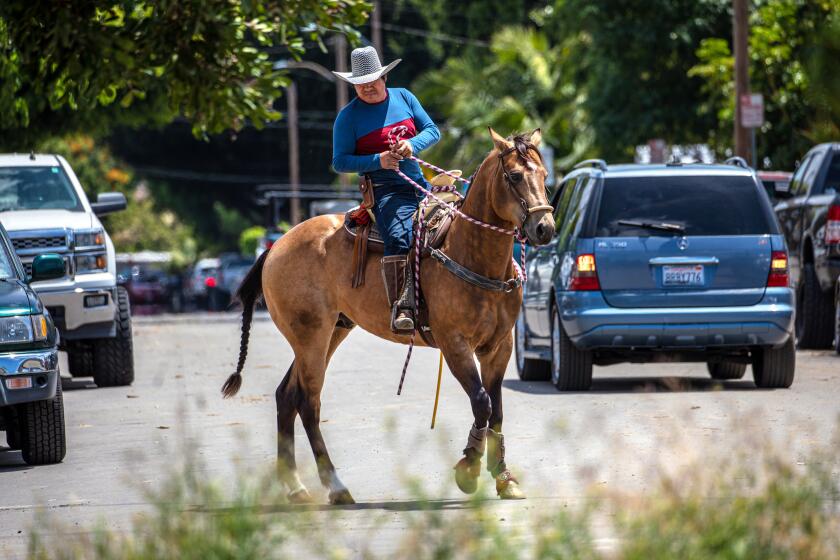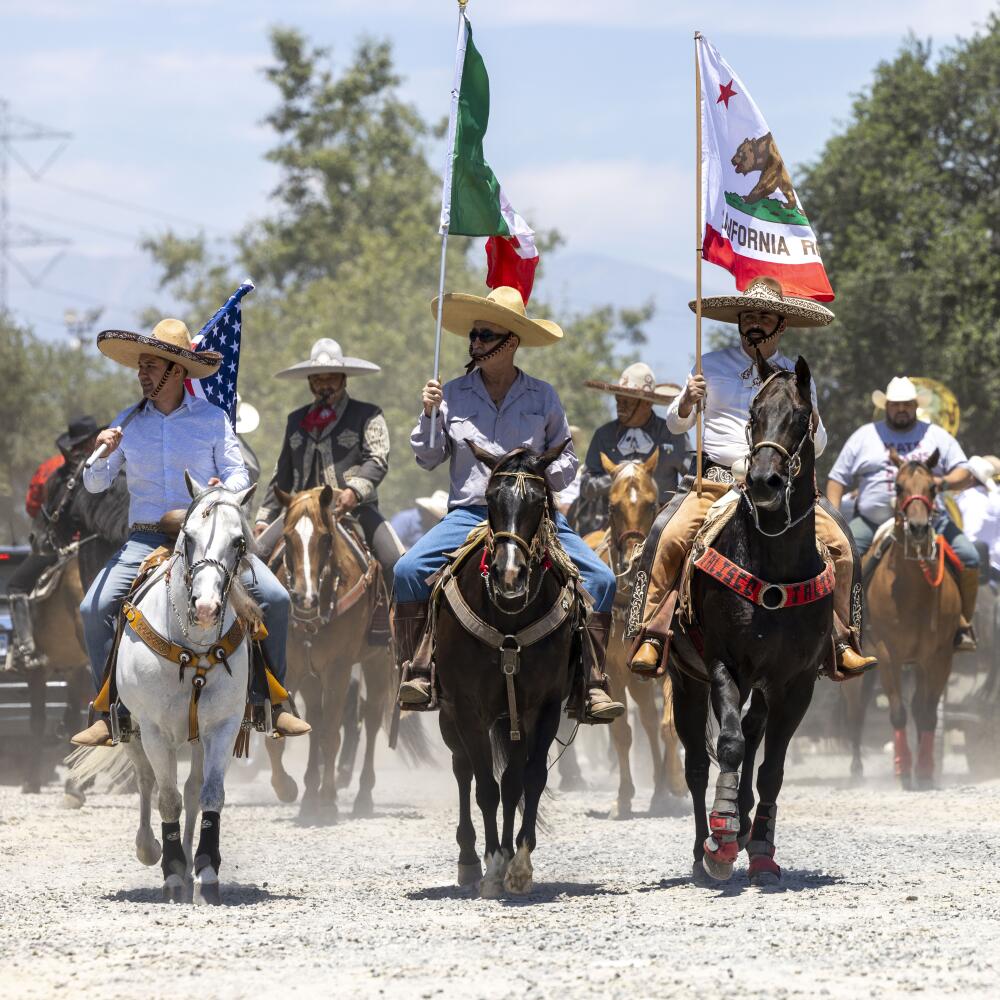
Samuel Brown-Vazquez has never visited his mother’s rural hometown in Michoacán, Mexico, given the violence and persecution his family fled in the 1980s. But his slice of the motherland is in the San Gabriel Valley in Avocado Heights.
It’s where he has ridden horses since 2010 after moving back to Southern California. He’d drive from East Los Angeles about three times a week to ride and keep the family horses well exercised. Soon, he was horseback riding nearly every day, a way to relieve stress from his job as a paralegal.
Growing up biracial — his father is white and was a former organizer with the United Farm Workers — Brown-Vazquez explored his Mexican identity in Avocado Heights, where residents greet each other as they pass by on horse, and where on any given day, he could visit a neighbor milling corn and making tamales from scratch. There, he also learned about charrería, which he came to see as a team sport between the charros and the horses they would intimately bond with.
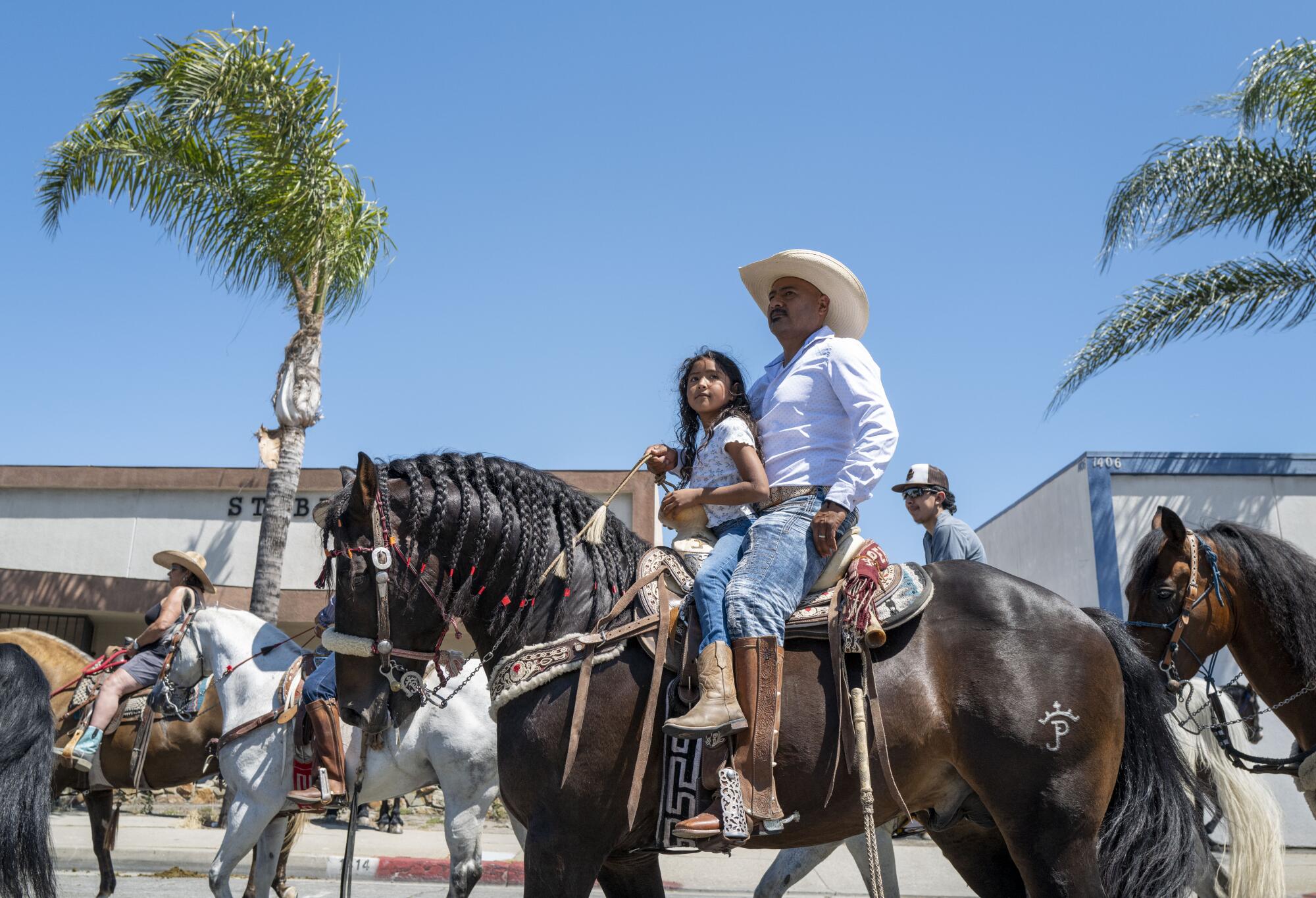
While initially feeling like an outsider, Brown-Vazquez saw the residents and charros of Avocado Heights as local role models whom “I wanted to aspire to be like,” he said.
Now, Brown-Vazquez, 35, is among a group of millennial activists who are embracing the vaquero lifestyle as a source of identity, and reclaiming it in a way that’s leading people to mobilize and fight the powers of expansion that threaten their agrarian way of life.
With warehouses and luxury housing developments expanding farther east and away from the city of Los Angeles, they’re activating residents and horse lovers in South El Monte, Pellissier Village and Avocado Heights — which converge around the intersection of the 60 and 605 freeways.
Brown-Vazquez started Avocado Heights Vaquer@s in late 2020. With the slogan “In defense of water, air, and land,” the coalition — made up of horse riders, residents, educators and allies — is in favor of more green spaces and against development that can contribute to the displacement of working-class families living in the rural communities.
“We don’t want to reinforce the image of a lonesome cowboy out on the range, because at the root of our culture is community,” Brown-Vazquez said.
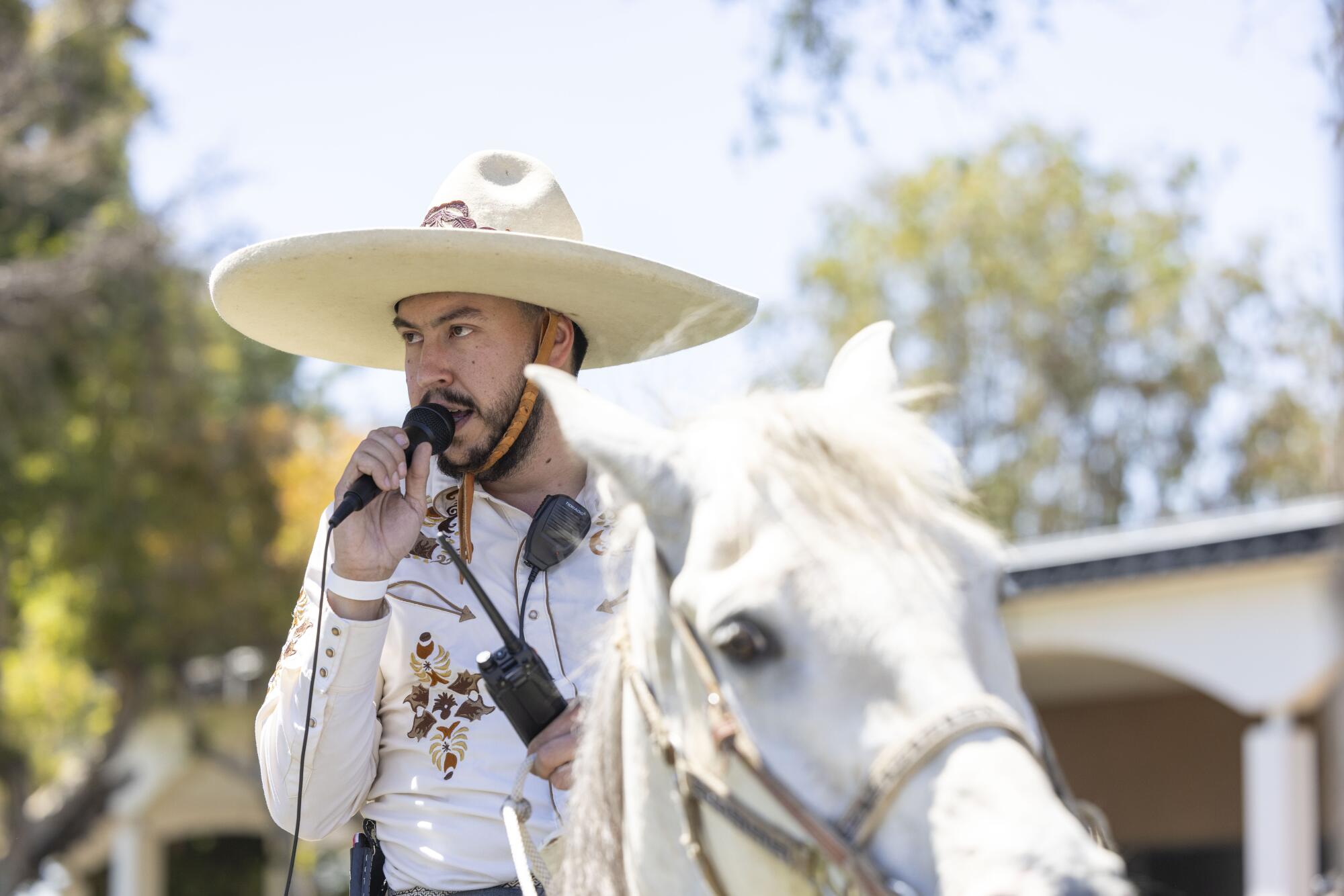
A main goal for Avocado Heights Vaquer@s is to stop Quemetco — a battery-recycling plant in the City of Industry — from expanding operations by 25%, which they believe will increase contamination in neighboring communities. Avocado Heights is surrounded by the City of Industry.
This spring, Brown-Vazquez and Nayellie Díaz, another member of Avocado Heights Vaquer@s, helped start Union de Ranchos upon hearing stories of residents and horse keepers in Pellissier Village, South El Monte and Avocado Heights venting about perceived abuse of code enforcement.
In one incident, a resident was told that his lot was 400 square feet too small for his four horses in South El Monte, an unincorporated area that is not an equestrian district, and recommended he buy a small property from a neighbor to get to code. Nuisance abatement teams were going into homes without permission, and residents were unaware of their rights, they said.
Union de Ranchos, a collective representing the three unincorporated communities, said there is no clear county code policy on horse stalls and are asking for a better system for compliance.
An exploration of marketing terms like ‘200%’ and how that’s shaped our identity.
With Avocado Heights Vaquer@s now reaching beyond its community, members are considering changing its name to San Gabriel Valley Vaquerxs.
They’re continuing to use gender-neutral language, to be inclusive of women in the cowboy culture that’s typically overrepresented by men, and to provide a more inviting space for queer people who may feel the vaquero atmosphere isn’t for them.
While they’re a pro-environmentalist organization, the collective also supports the right to rodeo; the group is also advocating against a rodeo ban that the Los Angeles City Council will consider.

How have you been affected by the housing crisis or gentrification?
“A lot of the mainstream environmental organizations are skeptical and don’t know what to make of us. We never did anything for the approval of mainstream organizations. As long as we had credibility in our community, that’s what it’s all about,” Brown-Vazquez said.
For Díaz, embracing a vaquera identity means being authentic to her family and ancestors who hail from the Sierra of Durango, Mexico. It’s also a way to connect with the agricultural community they are mobilizing. “This culture is all we know,” said Díaz, 34, whose father worked as a bracero around the 1940s.
“I identify with the everyday immigrant who comes from that background, who doesn’t necessarily speak English as their first language. English isn’t my first language. To me, it’s not so much an identity that I take on, but it’s an identity that I possess,” Díaz said.
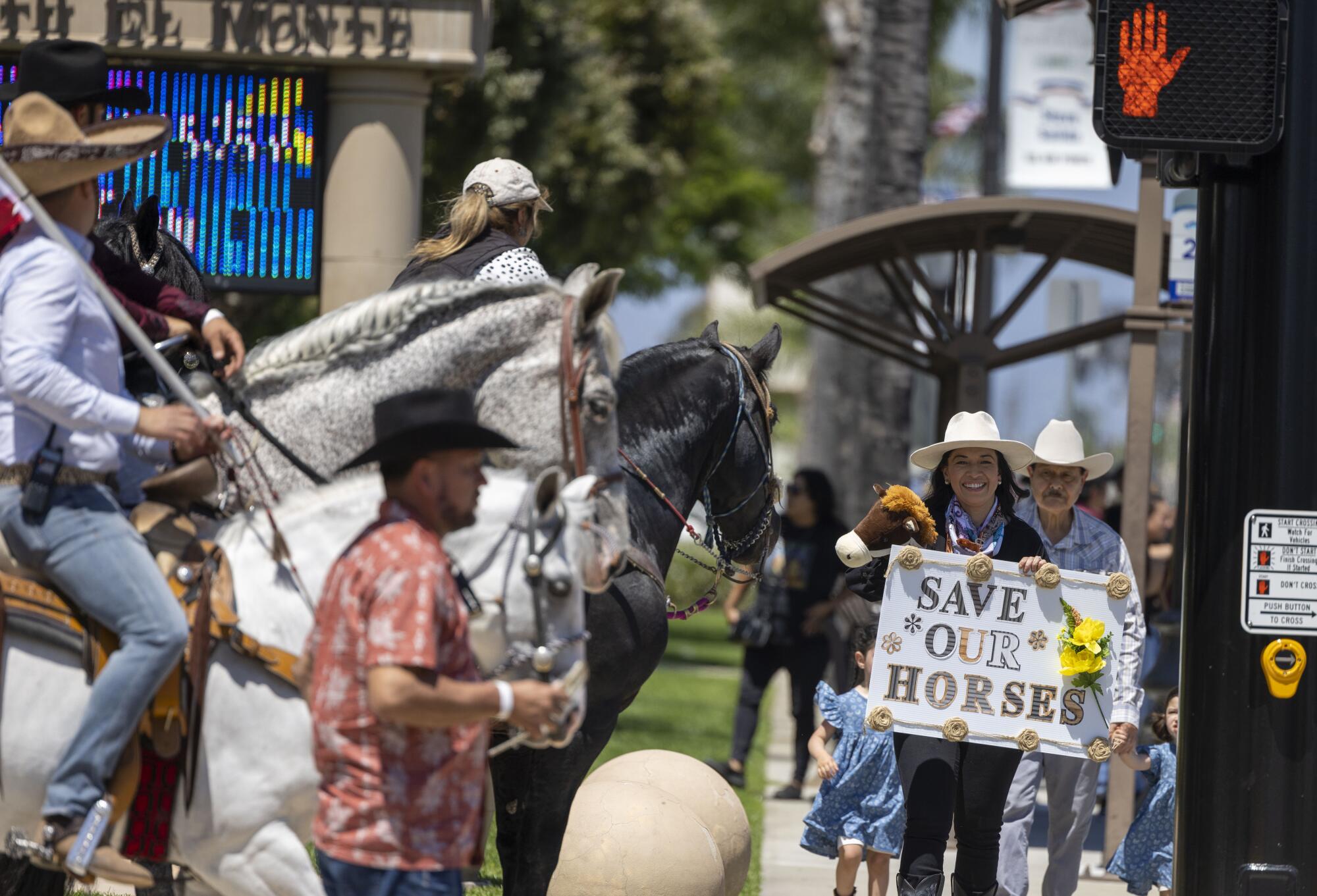
A longtime resident of La Puente, Díaz saw the need to politically engage her neighbors in much of the unincorporated and rural areas where it’s easy to lose touch with “everything going on around us.” Living close to the lead battery recycling smelter, Díaz said it’s crucial that residents learn of the side effects of the pollution and contamination associated with it.
“In order to preserve our culture, our way of living, our lands, our tradition, we have to become aware and support these environmental causes. If the environment is suffering, so is our community, so are our horses, our chickens, our roosters,” Díaz said.
They gathered in the horse enclave of Pellissier Village to gripe about code enforcement, which they claim has escalated as the COVID-19 pandemic winds down.
In late June, some 200 horseback riders paraded in a cabalgata through the San Gabriel Valley to call for the protection of their rural and horse-keeping areas. On their horses, leaders carried an American flag, a Mexican flag with an image of the Virgen de Guadalupe, and a California state flag.
“We’re here to fight for our land. We work very hard to have what we have,” said Samuel Barragan, 41, a Realtor who lives in Pellissier Village, as he geared up to lead the horse procession.
“This is ours and we won’t leave until we win,” said Barragan, a community leader who also organizes with Union de Ranchos.
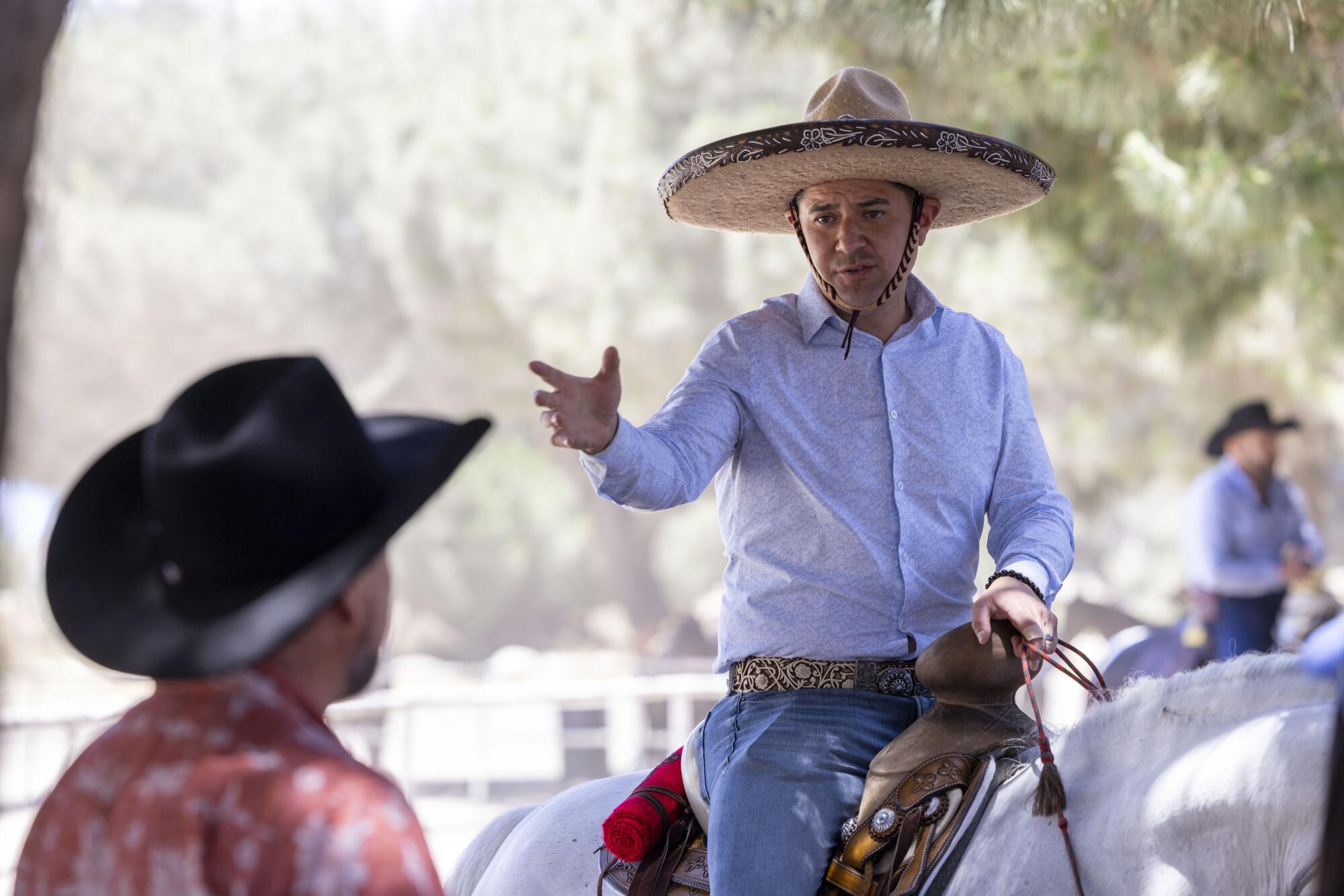
They rode under highways, bridges and through residential neighborhoods with their horses galloping and dancing to the sounds of a tamborazo banda playing in the bed of a pickup truck. Some wore charro outfits. A few rode bikes and scooters and stopped at intersections to help redirect traffic. One woman held up a sign declaring, “Save Our Horses.”
The cabalgata resembled the religious and festive horse parades in rural areas of Mexico, but Brown-Vazquez said it also served a political role in helping the community recognize that “our tradition is something that we have to … preserve.”
Alfonso Gonzales Toribio, ethnic studies professor and director of the Latino and Latin American Studies Research Center at UC Riverside, said rural residential communities “are becoming increasingly more important in terms of Latino social movements.”
“Since the days of the Mexican Revolution and even after, if you want to get rural Mexicans politically angry … you start trying to take land from them. You start gobbling up property, and you’ll see people who have traditionally been rather apolitical they will get involved,” he said.
And those mobilizing them are second-generation Mexican Americans, who are embracing that heritage and identity “as a way to organize people and as a way to create political clout,” Gonzales said. Many are the grandchildren and great-grandchildren of settlers who came to the United States in the 1940s and 1960s, Gonzales noted.
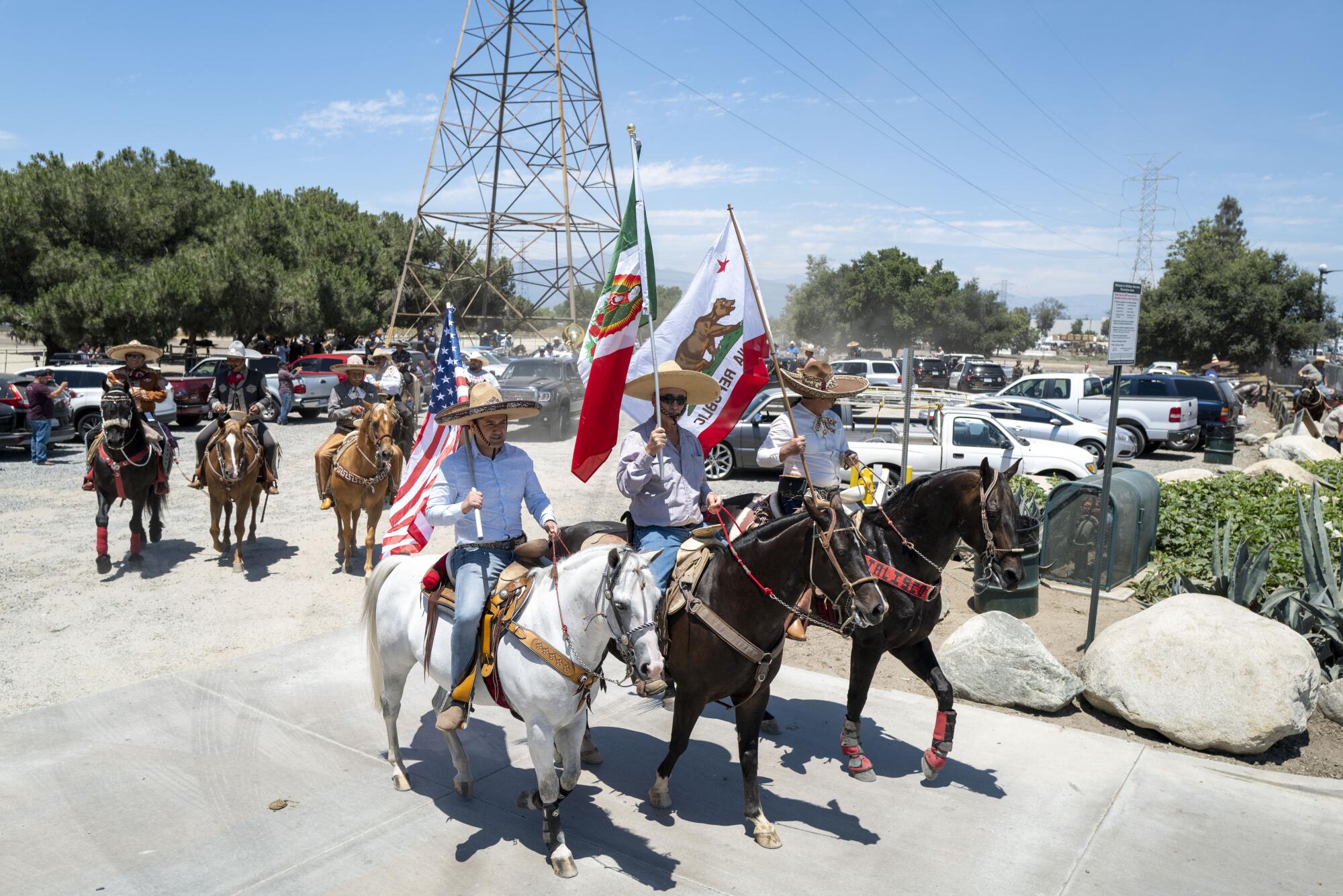
The majority of Mexicans in Southern California hail from the Bajío region of Mexico, which includes Zacatecas, Jalisco, Michoacan, and parts of Guanajuato, Aguascalientes and Nayarit, and they come with a history of ranching culture, he said.
“The Mexicanos who came out of the bracero program, they were coming from these ranchos, and I think what’s so significant is that 80 years later, we still have this ranchero culture flourishing and thriving among us,” Gonzales said.
As he rode in the cabalgata in June, Salvador Gaitan felt like he embodied Mexican revolutionary leaders Francisco Villa and Emiliano Zapata.
Gaitan, 50, a member of Union de Ranchos, has lived in Baldwin Park for more than 20 years. He had never seen the equestrian communities come together this way. But that’s how Latinos are, he said, “When we unite to do something, we achieve everything just like the revolution.”
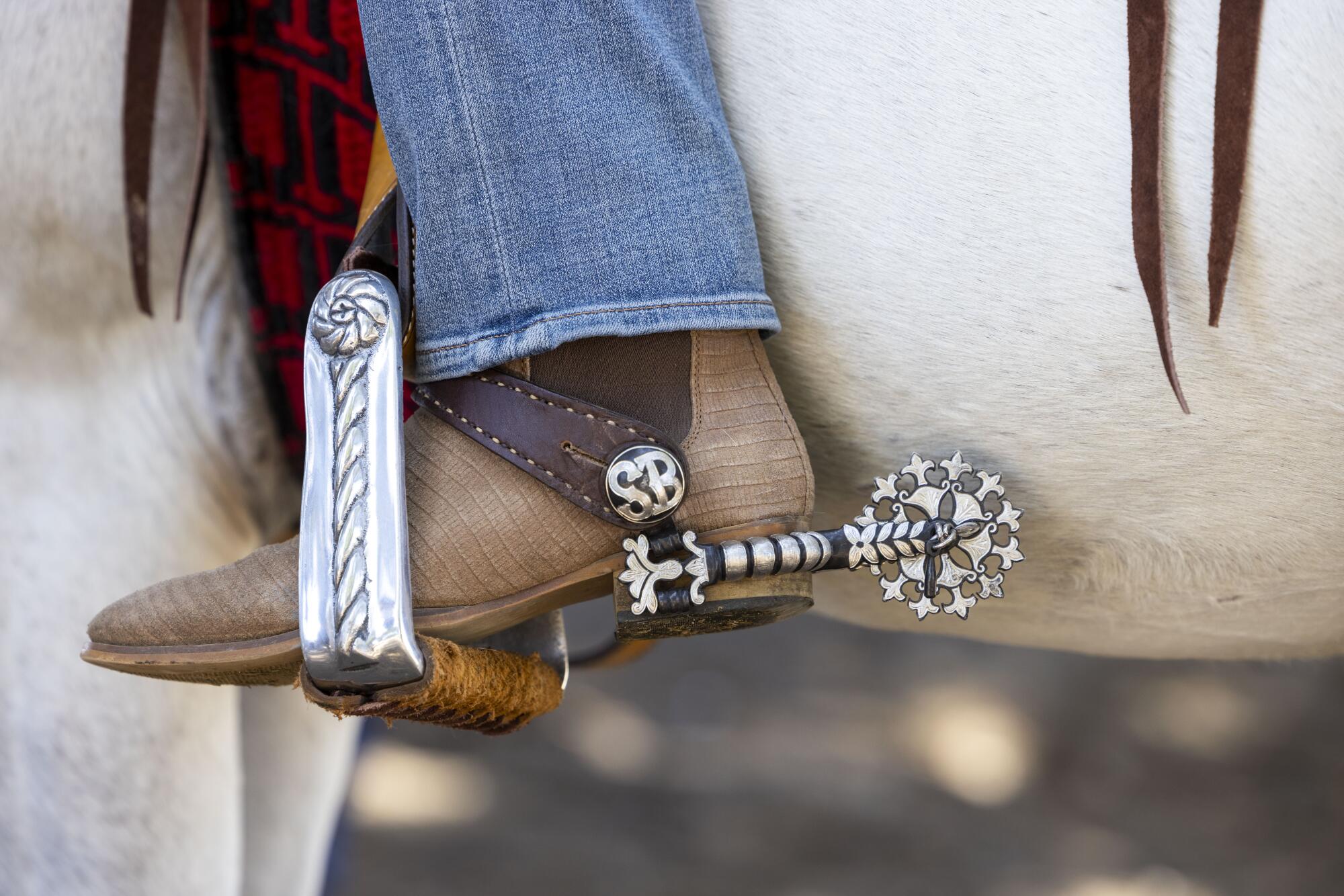
A native of Guadalajara in Jalisco state, Gaitan worked for years to be able to afford the three horses he keeps boarded in Pellissier Village for about $700 a month. He bought his first for $6,500 after selling his suburban truck.
Gaitan wasn’t particularly a politically involved person before, but he credits the leaders of Avocado Heights Vaquer@s and Union de Ranchos for spearheading this movement.
For Gaitan, caring for his animals, including his chickens, goats and horses, is a form of therapy. Bathing and caressing his animals brings him immense joy and mindfulness.
La vida de rancho, he says, is like nothing else.
The Latinx experience chronicled
Get the Latinx Files newsletter for stories that capture the multitudes within our communities.
You may occasionally receive promotional content from the Los Angeles Times.
More to Read
The Latinx experience chronicled
Get the Latinx Files newsletter for stories that capture the multitudes within our communities.
You may occasionally receive promotional content from the Los Angeles Times.


